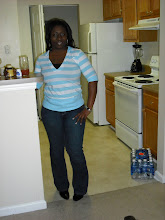
In this week’s post is a picture of my mind map. It gives you a picture of what my learning network looks like. A shift in focus to myself this week, I write about how the picture you see above describes how I learn. My ability as an individual to make connection in learning provides the opportunity to think in a wider range and think critically. I use a wide range of information presented to me in a plethora of forms for me to critically evaluate and build or modify existing knowledge.
Tools that best facilitate my learning will be technology tools: the digital age that we are in allows for a varied array of learning medium. Using the Internet to attend webinars, reading and following related blog pages, collaborations through IM and skype or Google docs and a number of communication mediums all help in facilitating my learning experience.
A question goes off in my head; a question that could have been triggered by conversations, readings, email, meetings and so on which means the call for new knowledge or time to modify an existing one. Following the map shown above, it gives you an idea of where I would go and how I would use the tools to accomplish my learning objective.




